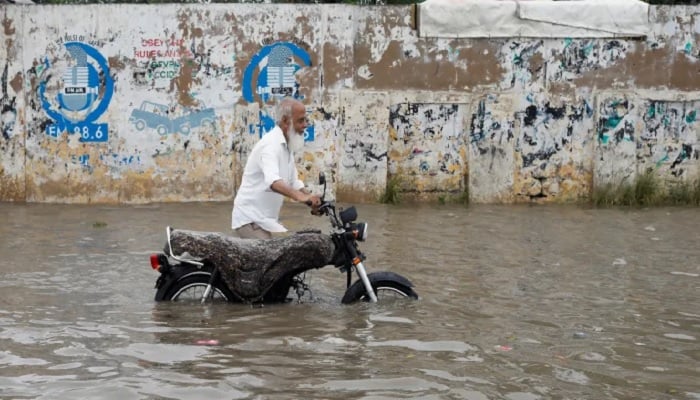Monsoon cloudbursts have claimed eight more lives in the past 24 hours, taking the nationwide death toll to 279, according to the National Disaster Management Authority (NDMA).
Punjab, already bearing the brunt of the season, saw six more deaths and all 21 reported injuries, while one fatality each was recorded in Khyber Pakhtunkhwa and Gilgit-Baltistan.
Painting a grim picture, the NDMA has reported that the ongoing rains have injured at least 676 people nationwide since the start of the season.
Hundreds of homes have been damaged, families displaced, and livestock lost as flooding continues to tear through rural and urban areas alike.
Punjab remains the hardest-hit province, with 151 confirmed deaths and 536 injuries. Khyber Pakhtunkhwa has recorded 64 deaths and 80 injuries. In Sindh, 25 people have died and 40 others have been hurt. Balochistan, too, has seen 20 fatalities and four injuries.
In the northern regions, Gilgit-Baltistan has reported nine deaths and four injuries so far, while Azad Kashmir has lost two residents to the weather and seen ten others injured. Islamabad has confirmed eight deaths and three injuries.
Beyond the human toll, the property damage has been extensive. Just in the past day, 362 homes were reported damaged. The total number of affected homes has now climbed to 1,553. At least 374 livestock have also perished.
Moreover, rescue and relief efforts are ongoing, but with more rainfall forecast in the coming days, disaster management authorities have strongly advised citizens to take precautions, especially those in flood-prone or low-lying areas.
Monsoon rains are a routine part of South Asia’s climate and are essential for crop irrigation and replenishing water supplies.
However, their adverse impact has worsened in recent years due to rapid urban expansion, poor drainage systems, and more frequent extreme weather events linked to climate change.

